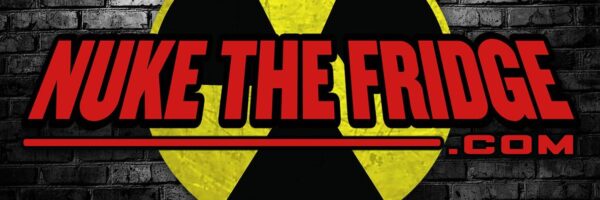2011 was my first Sundance. The Woman premiered the midnight of the Sunday Red State premiered so I was busy writing up Kevin Smith’s on stage antics so I missed the protestor. I’m not sure how I didn’t hear about that and motivate myself to catch a second screening, but I only ever saw The Woman on video.
The 4K UHD lets me see what it might have looked like at Sundance. It is a handsome film with the greenery of suburban isolation, though not a flashy aesthetic. My 4K TV is officially the biggest screen I’ve watched The Woman on and it holds up.
Like the best horror movies, The Woman is disturbing with something to say. A family man (Sean Bridgers) kidnaps the feral woman (Pollyanna McIntosh) and keeps her in his barn. As his family can’t stop him, the film deals with themes of patriarchal misogyny with no shortage of gory payoffs.
The bonus features include 75 minutes of behind the scenes footage shot by director Lucky McKee’s father in 2010, so it’s already high definition. This is a raw assemblage of B-roll so it highlights camera moves, keeping Pollyanna McIntosh’s body language in the film and the gore gags on location. It’s certainly more educational than a studio EPK.
Actually, the documentary “making of” is better than a studio EPK too. That’s where the Sundance protestor appears so I did eventually get to see him. Hope he’s recovered and is doing well today.
Lauren Ashley Carter still has vivid memories of the production in 2020 when her interview was recorded. The 2011 Fright Fest panel is a good group of horror filmmakers. It’s interesting they were at the tale end of the remake trend, but some of their other worries came to fruition or got worse.
There are four complete audio commentaries. McKee speaks about the process and development. His group commentary triggers a lot more memories about the behind-the-scenes environment, and it is the most active track because they keep reminding each other of other things.
McIntosh talks a bit about process, validating the stories about filming a lot of “outdoor” stuff in a high school gym. She also touches on her sequel, Darlin’. Scott Weinberg gives an analytical commentary. I am a fan of his podcast and have guested on it a few times. Here he offers critical analysis and provides a brief history of McKee. He also quotes female critics and other reviews, which is progressive of him to recognize they are important voices when discussing misogyny and patriarchal violence.
The Woman was actually a sequel to Offspring, which introduced McIntosh as The Woman. Shot on Super 16, Offspring always looked raw but also always looked better than digital. It’s upgraded really nicely and a feature on the restoration shows how 4K improved it.
The Woman’s feral family also intruded on so-called “civilized” members of society in Offspring. While no doubt, the ferals commit rape and murder, the seeds of contrasting them with approved society members are there.
Director Andrew van den Hauten gives a new commentary with his colorist so they get very technical about the transfer vs. the original color correction. Watching an earlier pass than the final product, they even notice specifics that get added by the time we see it, like muzzle flashes on guns.
Van den Hauten’s original commentary with author Jack Ketchum and producer William M. Miller covers the adaptation and production. McIntosh and van den Hauten also give a new 15 minute interview reflecting on the origins of The Woman.
Archival interviews with Ketchum and behind the scenes webisodes also capture the making of Offspring.But even Offspring has raw behind-the-scenes footage. It’s only 42 minutes but it’s still raw B-roll from the tech scout through filming of key scenes.

